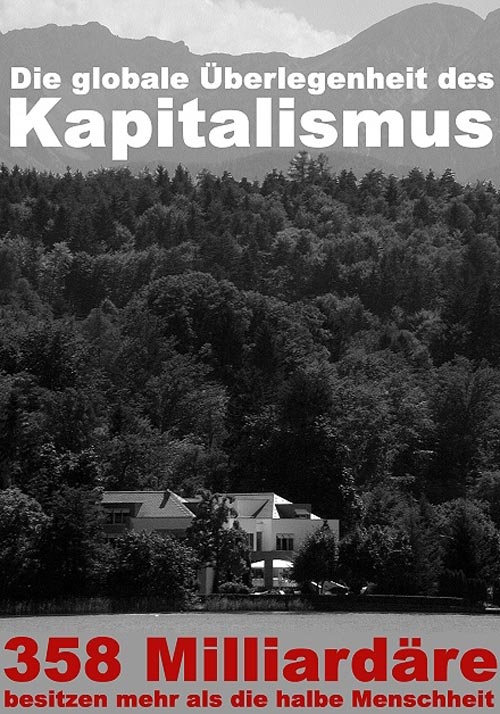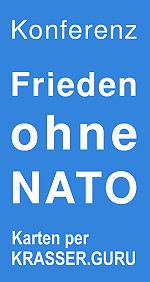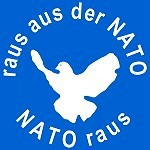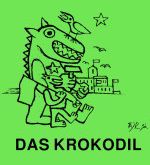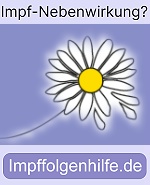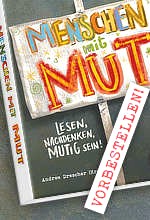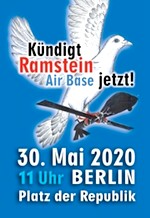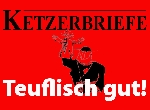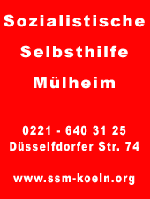SUCHE
Unabhängige Nachrichten, Berichte & Meinungen
Kultur und Wissen
In Erinnerung an die deutsche Friedensaktivistin im Israel-Palästina-Konflikt Ellen Rohlfs
„Sag, Mutter, wie sieht Frieden aus?“
Von Rudolf Hänsel
 Als ich in „Global Research“ vom 17. August 2022 („Haaretz“ 11. August 2022) den Artikel von Gideon Levy „Als Roger Waters weinte: ‚Hat ein Israeli Tränen für einen Jungen aus Gaza vergossen?‘“ (1) las, erinnerte ich mich an die deutsche Friedensaktivistin Ellen Rohlfs (1927-2020), mit der ich Mitte der neunziger Jahre in regem Austausch stand. Heute werde ich – in herzlichem Gedenken an diese vorbildliche Frau – allein aus ihrem Buch zitieren: „Sag, Mutter, wie sieht Frieden aus? Nachdenkliches und Frag-Würdiges zum Israel-Palästina-Konflikt mit einem Vorwort von Uri Avnery“. (2)
Als ich in „Global Research“ vom 17. August 2022 („Haaretz“ 11. August 2022) den Artikel von Gideon Levy „Als Roger Waters weinte: ‚Hat ein Israeli Tränen für einen Jungen aus Gaza vergossen?‘“ (1) las, erinnerte ich mich an die deutsche Friedensaktivistin Ellen Rohlfs (1927-2020), mit der ich Mitte der neunziger Jahre in regem Austausch stand. Heute werde ich – in herzlichem Gedenken an diese vorbildliche Frau – allein aus ihrem Buch zitieren: „Sag, Mutter, wie sieht Frieden aus? Nachdenkliches und Frag-Würdiges zum Israel-Palästina-Konflikt mit einem Vorwort von Uri Avnery“. (2)

Ellen Rohlfs im November 2009 (Foto: arbeiterfotografie.com)
Buchcover, Vorwort, Widmung
Bereits das Buchcover mit dem in großen Buchstaben geschriebenen Wort „Frieden“ in mehreren Sprachen vermittelt den Inhalt des Buches: Es geht um Frieden, Verständigung und Versöhnung zwischen den beiden Völkern – den Israelis und den Palästinensern.
In „einer Art Vorwort“ schreibt der israelische Journalist, Schriftsteller, Politiker und Friedensaktivist Uri Avnery:
„Als Israeli möchte ich nicht mit anderen moralischen Maßstäben gemessen werden als jedes andere Volk. Zionismus bedeutet für mich das Verlangen, als normales Volk in einem normalen Staat zu leben.“
(…).
„Was mir an diesem Buch am meisten imponiert, ist, dass es für beide Seiten dieses tragischen Konfliktes Verständnis hat. Darauf kommt es an. Es ist meine tiefste Überzeugung, dass man nicht gegen Israel sein muss, wenn man mit den Palästinensern sympathisiert – und dass man nicht gegen die Palästinenser sein muss, wenn man Israel liebt. Das Gegenteil stimmt: Man kann und muss für Israel, für die Palästinenser, für die Menschlichkeit und für den Frieden sein. Ellen Rohlfs ist es.“ (3)
Im Anschluss an das Vorwort vier Zitate als Widmung:
„Motto: ‚Israel mus live – must others die?“ (Poster bei einer Peace-Now-Demonstration)“
„‘Ein Mensch, der ein Mensch ist, kann nicht schweigen zu dem, was geschieht.‘ Erich Fried (aus ‚Höre Israel!‘)“
„‘Wer schweigt, stimmt zu!‘ (aus dem Talmud und aus dem Appell israelischer Friedensgruppen an die Freunde Israels s. Anhang II)“
„‘Wer ist ein Held? Der aus Feinden Freunde macht.‘ Avot d’Rabbi Nathan“ (4)
Einleitung von Ellen Rohlfs
„Auch wenn auf diesem Band die Frage eines Kindes steht: ‚Sag, Mutter, wie sieht Frieden aus?‘ so ist diese Frage eine viel ernstere und schwerwiegendere als die ‚bedeutenden Fragen‘ des ‚kleinen Prinzen‘ (St. Exupéry) an die Welt der Erwachsenen. Die Frage des Kindes ist so ernst, weil sie – dem Kind natürlich nicht bewusst – nicht nur lokale, sondern aus bestimmten Gründen globale Bedeutung hat.
Seit Anfang dieses Jahrhunderts befassen sich weltweit verantwortliche Politiker, Staatsminister und Außenminister, jüdische und nichtjüdische, amerikanische und europäische, die UNO und der Weltsicherheitsrat, namhafte Persönlichkeiten, Nahostexperten, Wirtschaftsmanager, Historiker, Theologen, Friedensforscher und viele andere mit der Frage, wie in Nahost Frieden geschaffen werden könnte, wie der Frieden in diesem kleinen Land, in dem seit etwa 100 Jahren zwei Völker miteinander leben müssen, aussehen sollte.
(…)
Und es kann auch nur dann Frieden zwischen beiden Völkern werden, wenn ‚die Israelis die Palästinenser wie Menschen behandeln‘, wie kürzlich ein Jude uns gegenüber zum Ausdruck brachte. Genau dafür plädiere ich, dies klage ich ein, dafür schreie ich auf – und warte ungeduldig auf Frieden in diesem Land, auf Frieden zwischen den beiden Völkern, zwischen den Israelis und den Palästinensern. …sollten wir heute – nach dem 13. September 1993 – dem Frieden ein Stück näher gekommen sein? Renne ich inzwischen offene Türen ein? Ich wäre wirklich froh.“ (5)
„Sag, Mutter, wie sieht Frieden aus?“
Gegen Ende des Buches beschreibt Rohlfs, wie der Frieden auch in Israel und Palästina aussehen könnte:
„Kinder malen ihre Welt. Sie malen sie so, wie sie sie erleben, so wie sie sie sehen, und mitten darin ihr kleines, großes Ich. Sie malen ihre Wünsche, ihre Träume…Zu den Träumen und Wünschen der Kinder Palästinas gehört die Sehnsucht, nicht ständig in Angst sein zu müssen: angstfrei zu spielen und angstfrei zu lernen, angstfrei sich auf der Straße zu bewegen, und angstfrei sich unter den Olivenbäumen zu tummeln und ohne Angst zwischen den Felsen ihres eigenen Landes herumzustreifen, ohne die Neugierde weckenden Objekte zu finden, die in ihren Händen explodieren.
Was für andere Kinder normal und selbstverständlich ist, angstfrei sich in den eigenen vier Wänden aufzuhalten mit Geschwistern, Eltern und Großeltern – und meistens sind die Räume sehr klein – auch angstfrei zu schlafen – ist seit langem für palästinensische Kinder nicht mehr selbstverständlich. Nächtliche Störungen durch rücksichtslose israelische Soldaten, die einen angeblich versteckten Terroristen suchen, sind an der Tagesordnung.
Kinder wollen auch nicht tage- und wochenlang wegen Ausgangssperre in ihren eigenen vier Wänden wie in einem Gefängnis eingesperrt sein – sie haben kaum Spielzeug. Den ganzen Tag vor dem Fernseher zu sitzen – wer hält das unbeschadet aus? Langeweile und Raufereien unter den Geschwistern gehören deshalb zum Alltag – auch Prügel von den Eltern; denn sie sind genauso gereizt und weniger geduldig; auch sie leben in ständiger Angst. Eines der vielen Kinder ist immer am Schreien. Die Spannung ist kaum zu ertragen.
Schlaf- und Essstörungen sind inzwischen normal, auch das Bettnässen…Niemand wundert sich mehr darüber. Die Ärzte haben resigniert – was sollen sie auch tun? Eine Reihe von Kindern sehen ihre Mutter sogar nur beim Besuch im Gefängnis, und nicht einmal hier dürfen sie von ihr in den Arm genommen werden. Warum ist Mutter eigentlich im Gefängnis? Hat sie sich nicht nur gegen die brutalen Soldaten zur Wehr gesetzt? Hat sie sich nicht nur vor den Bruder gestellt, damit ‚sie‘ ihn nicht mitnehmen? Mutter ist doch keine Verbrecherin.
Und immer wieder stehen die Kinder an einem offenen Grab, der große, tapfere Bruder wird hineingelegt oder ein kleines Geschwisterchen, das am Tränengas erstickte. Die Mutter weint, der Vater weint – das Kind aber versteht nicht, was los ist…Ist das das Leben? Und wenn die Kinder einmal zur Ruhe kommen, dann malen sie und stellen eine der tausend Fragen: ‚Sag, Mutter, wie sieht Frieden aus, ich möchte ihn malen.‘ Sie wissen nicht, was Frieden ist – sie haben nie Frieden erlebt.
(…).
Doch von einem etwa neunjährigen palästinensischen Kind habe ich eine schlichte, aber bewegende Zeichnung. Seine Eltern scheinen noch immer und trotz allem auf Versöhnung zu bauen – und nicht auf Hass. Ich beschreibe die Zeichnung:
Zwei Kinder stehen sich gegenüber. Das eine trägt auf seinem Kopf ein Käppchen, das andere ein schwarz-weißes Tuch, die Keffiye, und um es ganz deutlich zu machen, ist über dem mit dem Käppchen die israelische Flagge mit dem Davidstern, und über dem anderen Kind die palästinensische Fahne mit den vier Farben. Die Kinder reichen sich die Hände. Flankiert sind sie aber mit allerlei Waffen, Panzern, Flugzeugen und Gewehren – diese jedoch kräftig durchgestrichen. Sie wollen ohne bedrohende, todbringende Waffen leben. Sie wollen keine Angst mehr voreinander haben. Sie wollen mit- und nicht gegeneinander leben. Sie wollen miteinander spielen, miteinander feiern und fröhlich sein.
So sähe Frieden aus auch in Israel und Palästina. Aus einer ungewöhnlichen Mixtur von erlebter täglicher Angst, Naivität, Wünschen und Hoffnung entstand die Kinderzeichnung von Frieden und Versöhnung.“ (6)
Fußnoten:
(1) https://www.globalresearch.ca/when-roger-waters-cried/5790446/
(2) Rohlfs, Ellen (1993). Sag, Mutter, wie sieht Frieden aus? Nachdenkliches und Frag-Würdiges zum Israel-Palästina-Konflikt. Mit einem Vorwort von Uri Avnery. Tossens
(3) A. a. O., S. 10
(4) A. a. O., S. 11
(5) A. a. O., S. 12 ff.
(6) A. a. O., S. 178 ff.
English version:
In memory of the German peace activist in the Israel-Palestine conflict Ellen Rohlfs
"Say, Mother, what does peace look like?"
By Dr. Rudolf Hänsel
When I read in "Global Research" of 17 August 2022 ("Haaretz" 11 August 2022) the article by Gideon Levy "When Roger Waters wept: 'Did an Israeli shed tears for a boy from Gaza?'" (1), I remembered the German peace activist Ellen Rohlfs (1927-2020), with whom I had a lively exchange in the mid-1990s.
Today – in heartfelt remembrance of this exemplary woman – I will quote from her book alone: "Say, Mother, what does peace look like? Thoughtful and question-worthy reflections on the Israel-Palestine conflict with a foreword by Uri Avnery". (2)
Book cover, foreword, dedication
The book cover with the word "peace" written in large letters in several languages already conveys the content of the book: it is about peace, understanding and reconciliation between the two peoples – the Israelis and the Palestinians.
In "a kind of preface", the Israeli journalist, writer, politician and peace activist Uri Avnery writes:
"As an Israeli, I do not want to be measured by different moral standards than any other people. Zionism for me means the desire to live as a normal people in a normal state."
(...)
"What impresses me most about this book is that it has understanding for both sides of this tragic conflict. That is what matters. It is my deepest conviction that you don't have to be against Israel if you sympathise with the Palestinians – and that you don't have to be against the Palestinians if you love Israel. The opposite is true: One can and must be for Israel, for the Palestinians, for humanity and for peace. Ellen Rohlfs is." (3)
Following the preface, four quotes as dedications:
"Motto: 'Israel must live – must others die?" (poster at a Peace Now demonstration)"
"'A man who is a man cannot be silent about what is happening.' Erich Fried (from 'Hear Israel!')"
"'He who is silent agrees!' (from the Talmud and from the appeal of Israeli peace groups to the friends of Israel see Appendix II)"
"'Who is a hero? He who makes friends of enemies.' Avot d'Rabbi Nathan" (4)
Introduction by Ellen Rohlfs
"Even though this volume contains the question of a child: 'Tell me, mother, what does peace look like?' this question is a much more serious and grave one than the 'significant questions' of the 'little prince' (St. Exupéry) to the adult world. The child's question is so serious because – of course, the child is not aware of it – it has not only local but, for certain reasons, global significance.
Since the beginning of this century, responsible politicians worldwide, ministers of state and foreign ministers, Jewish and non-Jewish, American and European, the UN and the World Security Council, renowned personalities, Middle East experts, economic managers, historians, theologians, peace researchers and many others have been dealing with the question of how peace could be created in the Middle East, what peace should look like in this small country where two peoples have had to live together for about 100 years.
(...).
And there can also only be peace between the two peoples if 'the Israelis treat the Palestinians like human beings', as a Jew recently expressed to us. This is what I plead for, this is what I complain for, this is what I cry out for – and I wait impatiently for peace in this land, for peace between the two peoples, between the Israelis and the Palestinians. ...should we have come a little closer to peace today – after 13 September 1993? Am I knocking down open doors in the meantime? I would be really happy." (5)
"Tell me, mother, what does peace look like?"
Towards the end of the book, Rohlfs describes how peace could also look in Israel and Palestine:
"Children paint their world. They paint it as they experience it, as they see it, and in the middle of it their little, big selves. They paint their desires, their dreams...Among the dreams and desires of the children of Palestine is the longing not to have to be in fear all the time: to play without fear and to learn without fear, to move in the streets without fear, and to romp among the olive trees without fear, and to roam among the rocks of their own land without fear, without finding the objects that arouse curiosity exploding in their hands.
What is normal and taken for granted for other children, to stay fearlessly within their own four walls with siblings, parents and grandparents – and usually the rooms are very small - also to sleep fearlessly – has not been taken for granted for Palestinian children for a long time. Nightly disturbances by ruthless Israeli soldiers looking for a supposedly hidden terrorist are commonplace.
Children also don't want to be locked up in their own homes for days and weeks at a time like in a prison because of curfew – they hardly have any toys. Sitting in front of the TV all day – who can stand that unscathed? Boredom and scuffles among the siblings are therefore part of everyday life – also beatings from the parents; because they are just as irritable and less patient; they also live in constant fear. One of the many children is always screaming. The tension is almost unbearable.
Sleeping and eating disorders are now normal, even bed-wetting...No one is surprised about it any more. The doctors have resigned – what else can they do? A number of children even only see their mother when they visit her in prison, and not even here are they allowed to be held by her. Why is mother actually in prison? Didn't she just defend herself against the brutal soldiers? Didn't she just stand in front of her brother so that 'they' wouldn't take him away? Mother is not a criminal after all.
And again and again the children stand at an open grave, the big, brave brother is laid in it or a little sibling who choked on the tear gas. The mother cries, the father cries – but the child does not understand what is going on...Is this life? And once the children get calm, they paint and ask one of the thousand questions: 'Tell me, mother, what does peace look like, I want to paint it.' They don't know what peace is – they have never experienced peace.
(...).
But I have a simple but moving drawing of a Palestinian child of about nine years old. His parents seem still and despite everything to be building on reconciliation – and not on hatred. I describe the drawing:
Two children are facing each other. One wears a cap on his head, the other a black and white scarf, the keffiye, and to make it very clear, above the one with the cap is the Israeli flag with the Star of David, and above the other child the Palestinian flag with the four colours. The children are holding hands. They are flanked, however, by all kinds of weapons, tanks, aeroplanes and guns – but these are heavily crossed out. They want to live without threatening, deadly weapons. They no longer want to be afraid of each other. They want to live with each other and not against each other. They want to play together, celebrate together and be happy together.
This is what peace would look like in Israel and Palestine. From an unusual mixture of experienced daily fear, naivety, wishes and hope, the children's drawing of peace and reconciliation emerged." (6)
Footnotes:
(1) https://www.globalresearch.ca/when-roger-waters-cried/5790446/
(2) Rohlfs, Ellen (1993). Say, mother, what does peace look like? Thoughtful and question-worthy reflections on the Israel-Palestine conflict. With a foreword by Uri Avnery. Tossens
(3) op. cit., p. 10
(4) op. cit., p. 11
(5) op. cit., p. 12 ff.
(6) op. cit., p. 178 ff.
Dr. Rudolf Lothar Hänsel ist Lehrer (Rektor a. D.), Doktor der Pädagogik (Dr. paed.) und Diplom-Psychologe (Schwerpunkte: Klinische-, Pädagogische-, Medien- sowie Individual-Psychologie). Viele Jahrzehnte unterrichtete er, bildete Hochschulabsolventen fort, gründete zusammen mit Kollegen eine Modellschule für ehemalige Schulversager, bildete Beratungslehrkräften aus und war schließlich Staatlicher Schulberater. Als Pensionär arbeitete er viele Jahre als Psychotherapeut in eigener Praxis. In seinen Büchern und pädagogisch-psychologischen Fachartikeln fordert er eine bewusste ethisch-moralische Werteerziehung und eine Erziehung zum Gemeinsinn und Frieden.
Dr. Rudolf Lothar Hänsel is a teacher (retired headmaster), a doctor of education (Dr. paed.) and a graduate psychologist (specialisations: He specialises in clinical, educational, media and individual psychology.) He taught for many decades, trained university graduates, founded a model school for former school failures together with colleagues, trained counselling teachers and was finally a state school counsellor. As a retiree, he worked for many years as a psychotherapist in his own practice. In his books and educational-psychological articles, he calls for a conscious ethical-moral values education and an education for public spirit and peace.

Online-Flyer Nr. 797 vom 31.08.2022
In Erinnerung an die deutsche Friedensaktivistin im Israel-Palästina-Konflikt Ellen Rohlfs
„Sag, Mutter, wie sieht Frieden aus?“
Von Rudolf Hänsel
 Als ich in „Global Research“ vom 17. August 2022 („Haaretz“ 11. August 2022) den Artikel von Gideon Levy „Als Roger Waters weinte: ‚Hat ein Israeli Tränen für einen Jungen aus Gaza vergossen?‘“ (1) las, erinnerte ich mich an die deutsche Friedensaktivistin Ellen Rohlfs (1927-2020), mit der ich Mitte der neunziger Jahre in regem Austausch stand. Heute werde ich – in herzlichem Gedenken an diese vorbildliche Frau – allein aus ihrem Buch zitieren: „Sag, Mutter, wie sieht Frieden aus? Nachdenkliches und Frag-Würdiges zum Israel-Palästina-Konflikt mit einem Vorwort von Uri Avnery“. (2)
Als ich in „Global Research“ vom 17. August 2022 („Haaretz“ 11. August 2022) den Artikel von Gideon Levy „Als Roger Waters weinte: ‚Hat ein Israeli Tränen für einen Jungen aus Gaza vergossen?‘“ (1) las, erinnerte ich mich an die deutsche Friedensaktivistin Ellen Rohlfs (1927-2020), mit der ich Mitte der neunziger Jahre in regem Austausch stand. Heute werde ich – in herzlichem Gedenken an diese vorbildliche Frau – allein aus ihrem Buch zitieren: „Sag, Mutter, wie sieht Frieden aus? Nachdenkliches und Frag-Würdiges zum Israel-Palästina-Konflikt mit einem Vorwort von Uri Avnery“. (2)
Ellen Rohlfs im November 2009 (Foto: arbeiterfotografie.com)
Buchcover, Vorwort, Widmung
Bereits das Buchcover mit dem in großen Buchstaben geschriebenen Wort „Frieden“ in mehreren Sprachen vermittelt den Inhalt des Buches: Es geht um Frieden, Verständigung und Versöhnung zwischen den beiden Völkern – den Israelis und den Palästinensern.
In „einer Art Vorwort“ schreibt der israelische Journalist, Schriftsteller, Politiker und Friedensaktivist Uri Avnery:
„Als Israeli möchte ich nicht mit anderen moralischen Maßstäben gemessen werden als jedes andere Volk. Zionismus bedeutet für mich das Verlangen, als normales Volk in einem normalen Staat zu leben.“
(…).
„Was mir an diesem Buch am meisten imponiert, ist, dass es für beide Seiten dieses tragischen Konfliktes Verständnis hat. Darauf kommt es an. Es ist meine tiefste Überzeugung, dass man nicht gegen Israel sein muss, wenn man mit den Palästinensern sympathisiert – und dass man nicht gegen die Palästinenser sein muss, wenn man Israel liebt. Das Gegenteil stimmt: Man kann und muss für Israel, für die Palästinenser, für die Menschlichkeit und für den Frieden sein. Ellen Rohlfs ist es.“ (3)
Im Anschluss an das Vorwort vier Zitate als Widmung:
„Motto: ‚Israel mus live – must others die?“ (Poster bei einer Peace-Now-Demonstration)“
„‘Ein Mensch, der ein Mensch ist, kann nicht schweigen zu dem, was geschieht.‘ Erich Fried (aus ‚Höre Israel!‘)“
„‘Wer schweigt, stimmt zu!‘ (aus dem Talmud und aus dem Appell israelischer Friedensgruppen an die Freunde Israels s. Anhang II)“
„‘Wer ist ein Held? Der aus Feinden Freunde macht.‘ Avot d’Rabbi Nathan“ (4)
Einleitung von Ellen Rohlfs
„Auch wenn auf diesem Band die Frage eines Kindes steht: ‚Sag, Mutter, wie sieht Frieden aus?‘ so ist diese Frage eine viel ernstere und schwerwiegendere als die ‚bedeutenden Fragen‘ des ‚kleinen Prinzen‘ (St. Exupéry) an die Welt der Erwachsenen. Die Frage des Kindes ist so ernst, weil sie – dem Kind natürlich nicht bewusst – nicht nur lokale, sondern aus bestimmten Gründen globale Bedeutung hat.
Seit Anfang dieses Jahrhunderts befassen sich weltweit verantwortliche Politiker, Staatsminister und Außenminister, jüdische und nichtjüdische, amerikanische und europäische, die UNO und der Weltsicherheitsrat, namhafte Persönlichkeiten, Nahostexperten, Wirtschaftsmanager, Historiker, Theologen, Friedensforscher und viele andere mit der Frage, wie in Nahost Frieden geschaffen werden könnte, wie der Frieden in diesem kleinen Land, in dem seit etwa 100 Jahren zwei Völker miteinander leben müssen, aussehen sollte.
(…)
Und es kann auch nur dann Frieden zwischen beiden Völkern werden, wenn ‚die Israelis die Palästinenser wie Menschen behandeln‘, wie kürzlich ein Jude uns gegenüber zum Ausdruck brachte. Genau dafür plädiere ich, dies klage ich ein, dafür schreie ich auf – und warte ungeduldig auf Frieden in diesem Land, auf Frieden zwischen den beiden Völkern, zwischen den Israelis und den Palästinensern. …sollten wir heute – nach dem 13. September 1993 – dem Frieden ein Stück näher gekommen sein? Renne ich inzwischen offene Türen ein? Ich wäre wirklich froh.“ (5)
„Sag, Mutter, wie sieht Frieden aus?“
Gegen Ende des Buches beschreibt Rohlfs, wie der Frieden auch in Israel und Palästina aussehen könnte:
„Kinder malen ihre Welt. Sie malen sie so, wie sie sie erleben, so wie sie sie sehen, und mitten darin ihr kleines, großes Ich. Sie malen ihre Wünsche, ihre Träume…Zu den Träumen und Wünschen der Kinder Palästinas gehört die Sehnsucht, nicht ständig in Angst sein zu müssen: angstfrei zu spielen und angstfrei zu lernen, angstfrei sich auf der Straße zu bewegen, und angstfrei sich unter den Olivenbäumen zu tummeln und ohne Angst zwischen den Felsen ihres eigenen Landes herumzustreifen, ohne die Neugierde weckenden Objekte zu finden, die in ihren Händen explodieren.
Was für andere Kinder normal und selbstverständlich ist, angstfrei sich in den eigenen vier Wänden aufzuhalten mit Geschwistern, Eltern und Großeltern – und meistens sind die Räume sehr klein – auch angstfrei zu schlafen – ist seit langem für palästinensische Kinder nicht mehr selbstverständlich. Nächtliche Störungen durch rücksichtslose israelische Soldaten, die einen angeblich versteckten Terroristen suchen, sind an der Tagesordnung.
Kinder wollen auch nicht tage- und wochenlang wegen Ausgangssperre in ihren eigenen vier Wänden wie in einem Gefängnis eingesperrt sein – sie haben kaum Spielzeug. Den ganzen Tag vor dem Fernseher zu sitzen – wer hält das unbeschadet aus? Langeweile und Raufereien unter den Geschwistern gehören deshalb zum Alltag – auch Prügel von den Eltern; denn sie sind genauso gereizt und weniger geduldig; auch sie leben in ständiger Angst. Eines der vielen Kinder ist immer am Schreien. Die Spannung ist kaum zu ertragen.
Schlaf- und Essstörungen sind inzwischen normal, auch das Bettnässen…Niemand wundert sich mehr darüber. Die Ärzte haben resigniert – was sollen sie auch tun? Eine Reihe von Kindern sehen ihre Mutter sogar nur beim Besuch im Gefängnis, und nicht einmal hier dürfen sie von ihr in den Arm genommen werden. Warum ist Mutter eigentlich im Gefängnis? Hat sie sich nicht nur gegen die brutalen Soldaten zur Wehr gesetzt? Hat sie sich nicht nur vor den Bruder gestellt, damit ‚sie‘ ihn nicht mitnehmen? Mutter ist doch keine Verbrecherin.
Und immer wieder stehen die Kinder an einem offenen Grab, der große, tapfere Bruder wird hineingelegt oder ein kleines Geschwisterchen, das am Tränengas erstickte. Die Mutter weint, der Vater weint – das Kind aber versteht nicht, was los ist…Ist das das Leben? Und wenn die Kinder einmal zur Ruhe kommen, dann malen sie und stellen eine der tausend Fragen: ‚Sag, Mutter, wie sieht Frieden aus, ich möchte ihn malen.‘ Sie wissen nicht, was Frieden ist – sie haben nie Frieden erlebt.
(…).
Doch von einem etwa neunjährigen palästinensischen Kind habe ich eine schlichte, aber bewegende Zeichnung. Seine Eltern scheinen noch immer und trotz allem auf Versöhnung zu bauen – und nicht auf Hass. Ich beschreibe die Zeichnung:
Zwei Kinder stehen sich gegenüber. Das eine trägt auf seinem Kopf ein Käppchen, das andere ein schwarz-weißes Tuch, die Keffiye, und um es ganz deutlich zu machen, ist über dem mit dem Käppchen die israelische Flagge mit dem Davidstern, und über dem anderen Kind die palästinensische Fahne mit den vier Farben. Die Kinder reichen sich die Hände. Flankiert sind sie aber mit allerlei Waffen, Panzern, Flugzeugen und Gewehren – diese jedoch kräftig durchgestrichen. Sie wollen ohne bedrohende, todbringende Waffen leben. Sie wollen keine Angst mehr voreinander haben. Sie wollen mit- und nicht gegeneinander leben. Sie wollen miteinander spielen, miteinander feiern und fröhlich sein.
So sähe Frieden aus auch in Israel und Palästina. Aus einer ungewöhnlichen Mixtur von erlebter täglicher Angst, Naivität, Wünschen und Hoffnung entstand die Kinderzeichnung von Frieden und Versöhnung.“ (6)
Fußnoten:
(1) https://www.globalresearch.ca/when-roger-waters-cried/5790446/
(2) Rohlfs, Ellen (1993). Sag, Mutter, wie sieht Frieden aus? Nachdenkliches und Frag-Würdiges zum Israel-Palästina-Konflikt. Mit einem Vorwort von Uri Avnery. Tossens
(3) A. a. O., S. 10
(4) A. a. O., S. 11
(5) A. a. O., S. 12 ff.
(6) A. a. O., S. 178 ff.
English version:
In memory of the German peace activist in the Israel-Palestine conflict Ellen Rohlfs
"Say, Mother, what does peace look like?"
By Dr. Rudolf Hänsel
When I read in "Global Research" of 17 August 2022 ("Haaretz" 11 August 2022) the article by Gideon Levy "When Roger Waters wept: 'Did an Israeli shed tears for a boy from Gaza?'" (1), I remembered the German peace activist Ellen Rohlfs (1927-2020), with whom I had a lively exchange in the mid-1990s.
Today – in heartfelt remembrance of this exemplary woman – I will quote from her book alone: "Say, Mother, what does peace look like? Thoughtful and question-worthy reflections on the Israel-Palestine conflict with a foreword by Uri Avnery". (2)
Book cover, foreword, dedication
The book cover with the word "peace" written in large letters in several languages already conveys the content of the book: it is about peace, understanding and reconciliation between the two peoples – the Israelis and the Palestinians.
In "a kind of preface", the Israeli journalist, writer, politician and peace activist Uri Avnery writes:
"As an Israeli, I do not want to be measured by different moral standards than any other people. Zionism for me means the desire to live as a normal people in a normal state."
(...)
"What impresses me most about this book is that it has understanding for both sides of this tragic conflict. That is what matters. It is my deepest conviction that you don't have to be against Israel if you sympathise with the Palestinians – and that you don't have to be against the Palestinians if you love Israel. The opposite is true: One can and must be for Israel, for the Palestinians, for humanity and for peace. Ellen Rohlfs is." (3)
Following the preface, four quotes as dedications:
"Motto: 'Israel must live – must others die?" (poster at a Peace Now demonstration)"
"'A man who is a man cannot be silent about what is happening.' Erich Fried (from 'Hear Israel!')"
"'He who is silent agrees!' (from the Talmud and from the appeal of Israeli peace groups to the friends of Israel see Appendix II)"
"'Who is a hero? He who makes friends of enemies.' Avot d'Rabbi Nathan" (4)
Introduction by Ellen Rohlfs
"Even though this volume contains the question of a child: 'Tell me, mother, what does peace look like?' this question is a much more serious and grave one than the 'significant questions' of the 'little prince' (St. Exupéry) to the adult world. The child's question is so serious because – of course, the child is not aware of it – it has not only local but, for certain reasons, global significance.
Since the beginning of this century, responsible politicians worldwide, ministers of state and foreign ministers, Jewish and non-Jewish, American and European, the UN and the World Security Council, renowned personalities, Middle East experts, economic managers, historians, theologians, peace researchers and many others have been dealing with the question of how peace could be created in the Middle East, what peace should look like in this small country where two peoples have had to live together for about 100 years.
(...).
And there can also only be peace between the two peoples if 'the Israelis treat the Palestinians like human beings', as a Jew recently expressed to us. This is what I plead for, this is what I complain for, this is what I cry out for – and I wait impatiently for peace in this land, for peace between the two peoples, between the Israelis and the Palestinians. ...should we have come a little closer to peace today – after 13 September 1993? Am I knocking down open doors in the meantime? I would be really happy." (5)
"Tell me, mother, what does peace look like?"
Towards the end of the book, Rohlfs describes how peace could also look in Israel and Palestine:
"Children paint their world. They paint it as they experience it, as they see it, and in the middle of it their little, big selves. They paint their desires, their dreams...Among the dreams and desires of the children of Palestine is the longing not to have to be in fear all the time: to play without fear and to learn without fear, to move in the streets without fear, and to romp among the olive trees without fear, and to roam among the rocks of their own land without fear, without finding the objects that arouse curiosity exploding in their hands.
What is normal and taken for granted for other children, to stay fearlessly within their own four walls with siblings, parents and grandparents – and usually the rooms are very small - also to sleep fearlessly – has not been taken for granted for Palestinian children for a long time. Nightly disturbances by ruthless Israeli soldiers looking for a supposedly hidden terrorist are commonplace.
Children also don't want to be locked up in their own homes for days and weeks at a time like in a prison because of curfew – they hardly have any toys. Sitting in front of the TV all day – who can stand that unscathed? Boredom and scuffles among the siblings are therefore part of everyday life – also beatings from the parents; because they are just as irritable and less patient; they also live in constant fear. One of the many children is always screaming. The tension is almost unbearable.
Sleeping and eating disorders are now normal, even bed-wetting...No one is surprised about it any more. The doctors have resigned – what else can they do? A number of children even only see their mother when they visit her in prison, and not even here are they allowed to be held by her. Why is mother actually in prison? Didn't she just defend herself against the brutal soldiers? Didn't she just stand in front of her brother so that 'they' wouldn't take him away? Mother is not a criminal after all.
And again and again the children stand at an open grave, the big, brave brother is laid in it or a little sibling who choked on the tear gas. The mother cries, the father cries – but the child does not understand what is going on...Is this life? And once the children get calm, they paint and ask one of the thousand questions: 'Tell me, mother, what does peace look like, I want to paint it.' They don't know what peace is – they have never experienced peace.
(...).
But I have a simple but moving drawing of a Palestinian child of about nine years old. His parents seem still and despite everything to be building on reconciliation – and not on hatred. I describe the drawing:
Two children are facing each other. One wears a cap on his head, the other a black and white scarf, the keffiye, and to make it very clear, above the one with the cap is the Israeli flag with the Star of David, and above the other child the Palestinian flag with the four colours. The children are holding hands. They are flanked, however, by all kinds of weapons, tanks, aeroplanes and guns – but these are heavily crossed out. They want to live without threatening, deadly weapons. They no longer want to be afraid of each other. They want to live with each other and not against each other. They want to play together, celebrate together and be happy together.
This is what peace would look like in Israel and Palestine. From an unusual mixture of experienced daily fear, naivety, wishes and hope, the children's drawing of peace and reconciliation emerged." (6)
Footnotes:
(1) https://www.globalresearch.ca/when-roger-waters-cried/5790446/
(2) Rohlfs, Ellen (1993). Say, mother, what does peace look like? Thoughtful and question-worthy reflections on the Israel-Palestine conflict. With a foreword by Uri Avnery. Tossens
(3) op. cit., p. 10
(4) op. cit., p. 11
(5) op. cit., p. 12 ff.
(6) op. cit., p. 178 ff.
Dr. Rudolf Lothar Hänsel ist Lehrer (Rektor a. D.), Doktor der Pädagogik (Dr. paed.) und Diplom-Psychologe (Schwerpunkte: Klinische-, Pädagogische-, Medien- sowie Individual-Psychologie). Viele Jahrzehnte unterrichtete er, bildete Hochschulabsolventen fort, gründete zusammen mit Kollegen eine Modellschule für ehemalige Schulversager, bildete Beratungslehrkräften aus und war schließlich Staatlicher Schulberater. Als Pensionär arbeitete er viele Jahre als Psychotherapeut in eigener Praxis. In seinen Büchern und pädagogisch-psychologischen Fachartikeln fordert er eine bewusste ethisch-moralische Werteerziehung und eine Erziehung zum Gemeinsinn und Frieden.
Dr. Rudolf Lothar Hänsel is a teacher (retired headmaster), a doctor of education (Dr. paed.) and a graduate psychologist (specialisations: He specialises in clinical, educational, media and individual psychology.) He taught for many decades, trained university graduates, founded a model school for former school failures together with colleagues, trained counselling teachers and was finally a state school counsellor. As a retiree, he worked for many years as a psychotherapist in his own practice. In his books and educational-psychological articles, he calls for a conscious ethical-moral values education and an education for public spirit and peace.

Online-Flyer Nr. 797 vom 31.08.2022
